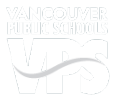Safety incident responses and communications
We take all medical and safety concerns very seriously and we think it’s important to have conversations about safety with our students, staff, and community. Because of this, we are sharing the below information because we believe it’s important for our families to know what we do in the event of an emergency.
Here are the typical actions we take in these situations:
Our staff is regularly trained in life-saving responses such as:
- CPR and the use of an AED
- General first-aid measures
- Narcan (overdose reversal medication) administration
- Seizure best practices
- Run, Hide, Fight Active Shooter response
With this training, when a safety concern arises we are able to assess situations and respond appropriately as we await help from first responders.
Sometimes the situation allows us to call families directly to develop a plan to support their student. Other times, the situation requires us to call our first responders through 911.
If you’ve had the experience of having to call 911 for an emergency, you probably recognize that 911 dispatchers guide callers through a sequence of questions to quickly obtain information necessary for dispatching the right responders to the right location.
In the case of a medical emergency, if a family member is unable to arrive in time to be transported to the hospital with the student, we often send staff along to support the student.
These 911 calls are also archived and made available to local authorities. Sometimes, after the emergency is over, law enforcement engages with us to conduct an investigation even if they did not initially respond. We rely on the expertise of these first responders to determine what next steps are appropriate.
When first responders come to our schools, our students, staff, and families often have questions about what happened.
Sometimes the situation is one where we can share general information about what happened, and we do so as soon as possible. For example:
- Suspected gas leak
- Stranger danger
- Fire alarm
In situations that involve specific student or staff medical emergencies, we are required to follow federal privacy laws, such as FERPA and HIPAA, which prohibit us from sharing details without written permission to do so from the student’s family.
In these cases, we work with the families of victims to determine what we can share about the situation. Sometimes these families are experiencing a horrible trauma and we want to respect their wishes.
This is especially true in cases of:
- Violence
- Self-harm
- Drug/alcohol abuse
Balancing privacy concerns with the need to raise all our parents’ awareness of risks in our community can be delicate.
For this reason, we think about communication in two strands, proactive and reactive.
Proactive and preventative communication
We try to provide proactive communication about important topics and risks in our community that could potentially endanger our students’ health and safety.
We specifically share information when public health and public safety partners share concerns they’re seeing in the community with us.
We get mixed feedback from our families about whether they would like to receive these messages and accompanying resources, but we feel they are important to push out.
Reactive communications after an incident
In reactive situations, where a significant and tragic event does happen, we do work directly with the family to determine what they would like shared and what they would like to keep private. We ask staff who the family already knows to reach out to them and keep communication channels open for these situations. This communication can happen over a span of a few days or several weeks.
Sometimes we are not included in what may have been the cause of the medical emergency. Until we can confirm the cause, and have permission to do so, we do not share it with the broader community.
We take the responsibility of keeping our students, staff, and community safe very seriously. We unfortunately live in a world that has a lot of safety concerns. We want to be ready to address those concerns and communicate about them transparently both proactively and reactively.
We continuously work to learn, grow and improve our safety and communication practices.
